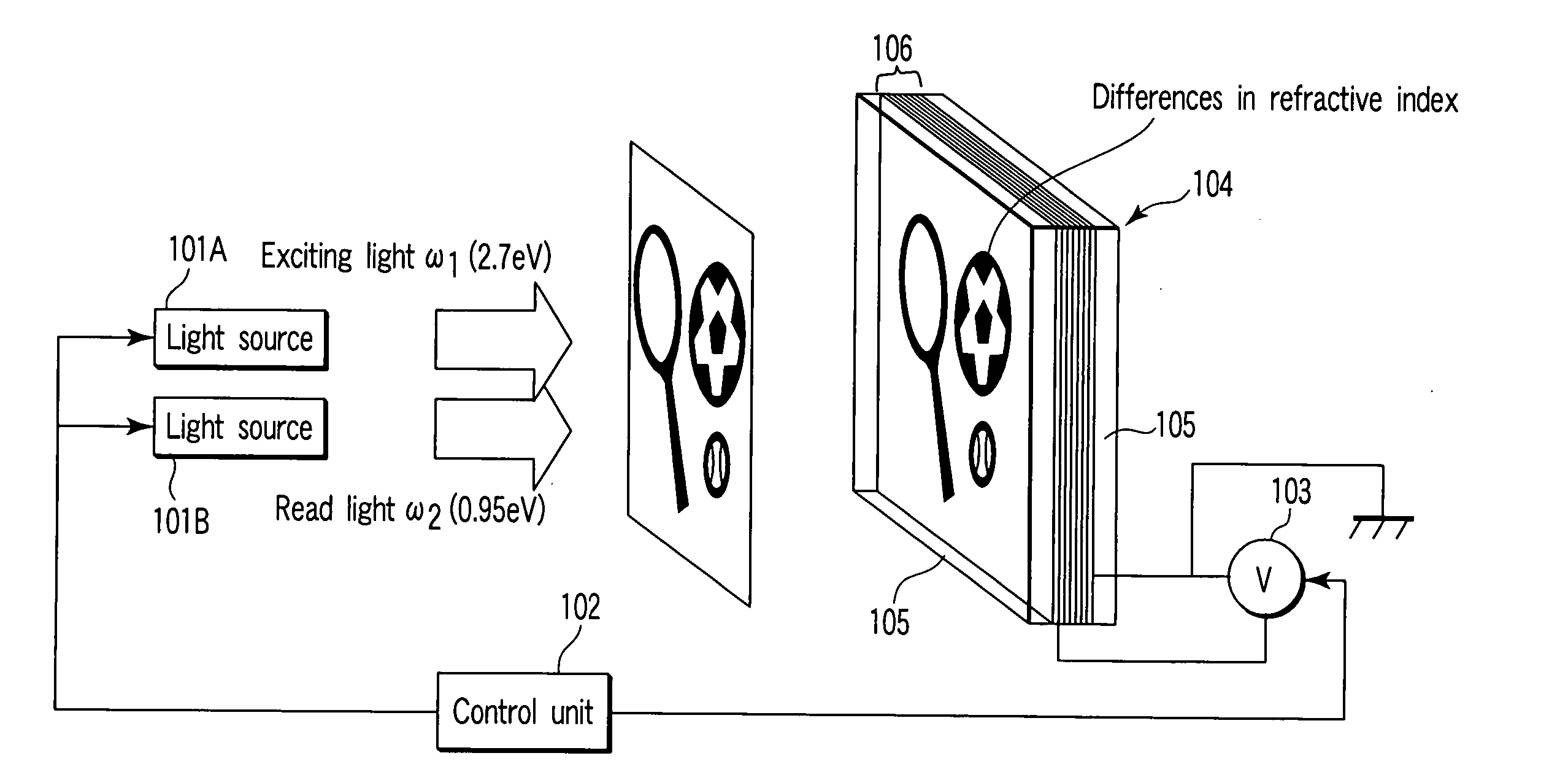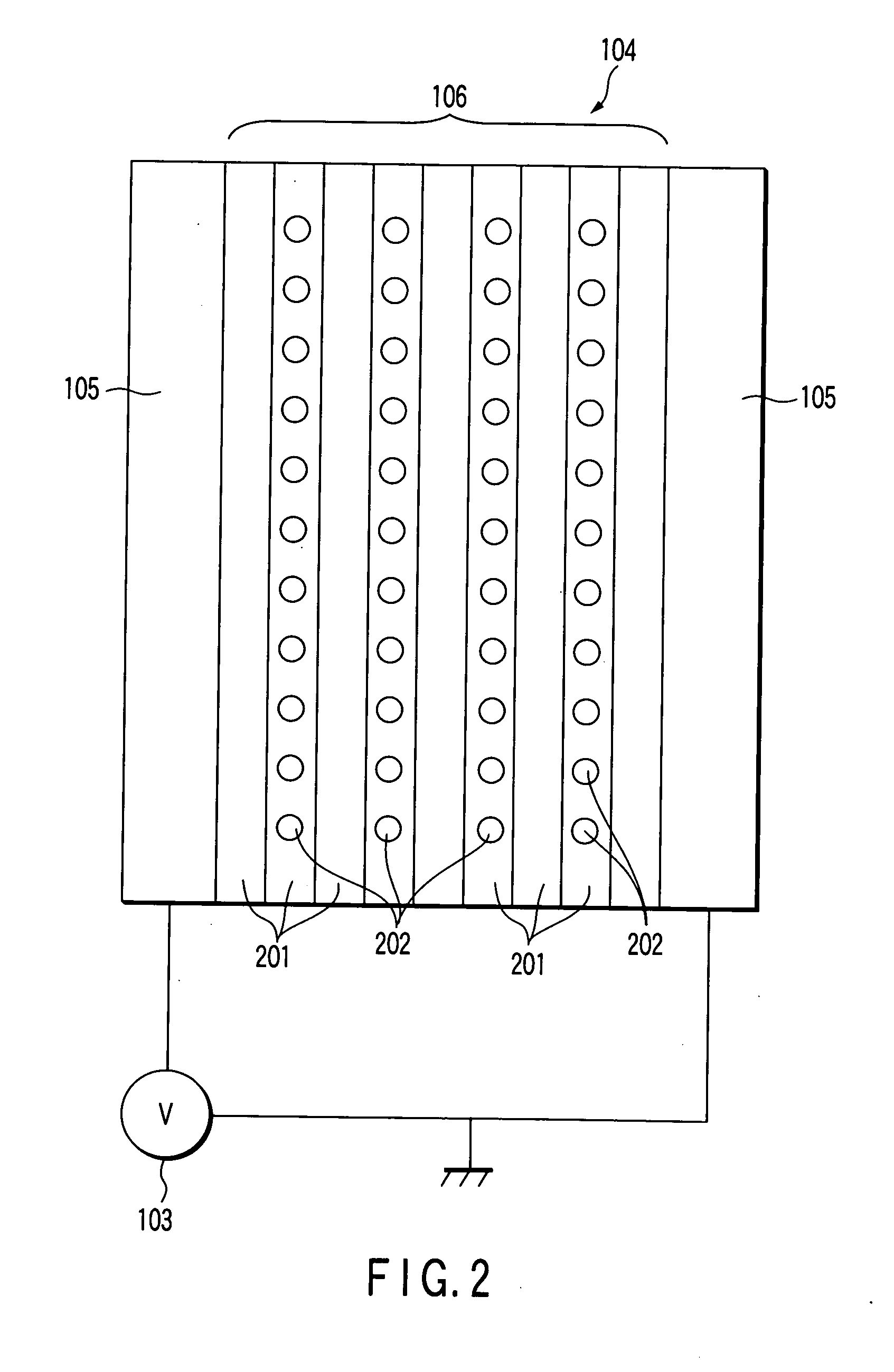Refractive index changing apparatus and method
a technology of index changing apparatus and refractive index, which is applied in the direction of instruments, optical elements, optics, etc., can solve the problem of limited use of liquid crystals
- Summary
- Abstract
- Description
- Claims
- Application Information
AI Technical Summary
Benefits of technology
Problems solved by technology
Method used
Image
Examples
experimental example 1
[0080] Referring to FIG. 6, a description will be given of a specific experimental example in which the refractive index changeable element structure 104 is modified.
[0081] In this example, the barrier structure 201 is formed of polystyrene films, and the quantum dots 202 are formed of C60 and dispersed in the polystyrene films. The polystyrene films containing the quantum dots 202 are stacked and held between the ITO transparent electrodes 105. To permit the potential difference of the ITO transparent electrodes 105 to be changed, each electrode (electron injection unit) 105 is connected to the energy level control unit 103 for the electron injection unit. In the refractive index changeable element structure shown in FIG. 6, ten units, each of which is formed of the transparent electrodes 105 and the polystyrene films held therebetween, are attached together.
[0082] As shown in FIG. 6, voltages were applied to the respective pairs of ITO transparent electrodes 105 so that the elec...
experimental example 2
[0087] In the experimental example 1, if the ITO transparent electrodes as the electron injection unit were formed of gold, when the application of the voltage was stopped, the refractive index pattern disappeared. However, when the ITO transparent electrodes were formed of cesium, the pattern was left even after the application of the voltage was stopped.
experimental example 3
[0088] In a third experimental example, two exciting light beams are made to interfere with each other by an object lens, and the resultant interference pattern is recorded in the quantum structure 106. This example will be described with reference to FIG. 8.
[0089] Two exciting light beams ω3 and ω4 (each having an energy level of 2.7 eV and a wavelength of about 460 nm) were made to interfere with each other by an object lens 501. The resultant light beam was emitted to the refractive index changeable element structure of the experimental example 1, whereby a light spot of an interference pattern was recorded in the quantum structure 106. This recording corresponds to recording of digital data. The density of the interference pattern was about 9 patterns per 1 cm2. After that, when a light beam (read light beam) of 0.95 eV (with a wavelength of 1.3 μm) was emitted with a beam area of 1 cm2 from the light source 101B, the light beam was diffracted at 9 points, thereby simultaneousl...
PUM
| Property | Measurement | Unit |
|---|---|---|
| energy gap | aaaaa | aaaaa |
| transparent | aaaaa | aaaaa |
| de Broglie wavelength | aaaaa | aaaaa |
Abstract
Description
Claims
Application Information
 Login to View More
Login to View More - R&D
- Intellectual Property
- Life Sciences
- Materials
- Tech Scout
- Unparalleled Data Quality
- Higher Quality Content
- 60% Fewer Hallucinations
Browse by: Latest US Patents, China's latest patents, Technical Efficacy Thesaurus, Application Domain, Technology Topic, Popular Technical Reports.
© 2025 PatSnap. All rights reserved.Legal|Privacy policy|Modern Slavery Act Transparency Statement|Sitemap|About US| Contact US: help@patsnap.com



